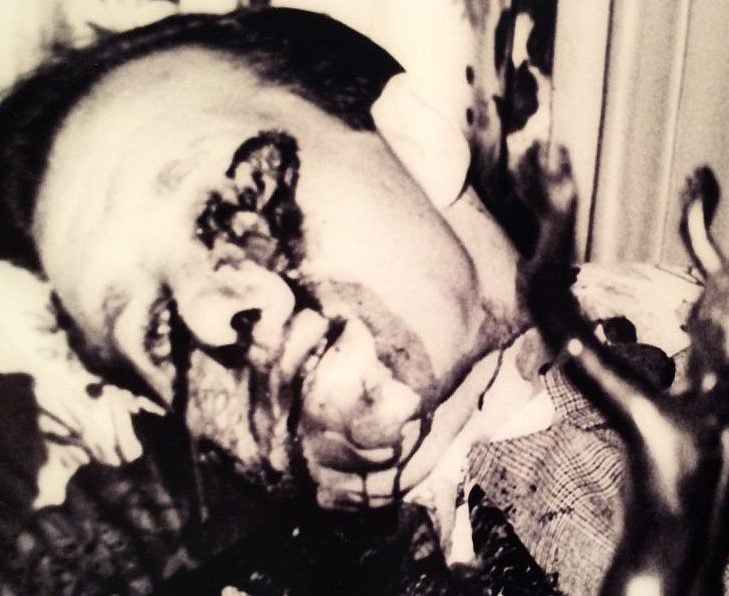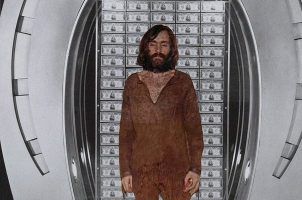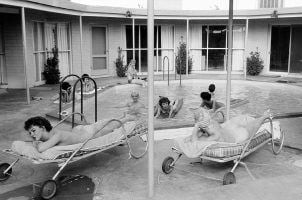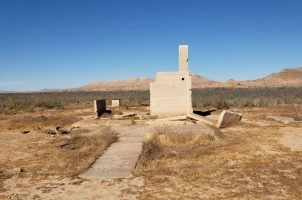VEGAS MYTHS BUSTED: Mob Boss Bugsy Siegel Fathered the Las Vegas Strip
Posted on: September 9, 2022, 08:00h.
Last updated on: December 31, 2023, 09:00h.
Think Las Vegas was founded by mobsters? Think again.

That moment in the 1991 film Bugsy when Warren Beatty walked out into the barren desert and had a vision? Fake news. Mobster Benjamin “Bugsy” Siegel didn’t create the Las Vegas Strip. He didn’t even create the Flamingo Hotel he’s famously associated with.
In reality, Siegel and his literal partner in crime, Moe Sedway, didn’t move to Las Vegas until 1945 to take over operations at the mob’s newly acquired El Cortez casino downtown. By that time, the Strip was well underway, with Western-themed hotels the Last Frontier and El Rancho Vegas operating for several years along what was then known as Highway 91.
Siegel, Sedway, and their underworld boss, Meyer Lansky, met when they were kids running with Jewish-Italian street gangs in early-1920s New York City. A decade later, Siegel and Lansky ran a murderous bootlegging outfit called the Bugs and Meyer Mob, while Sedway made trips to Las Vegas, on Lansky’s behalf, to franchise the syndicate’s Trans-America race wire service.
Bugsy didn’t even father the Flamingo. That resort was the baby of Billy Wilkerson, founder and publisher of The Hollywood Reporter. All Siegel did was take it over in 1946 — by some accounts, using threats of violence — when Wilkerson’s dream went bust before construction was completed. Reportedly, Wilkerson had gambled away his cash.
Bugsy’s Influence on Vegas
Siegel didn’t father the Las Vegas Strip, but he did influence how it developed and grew. His sensationalized death helped put Vegas on the map.
On June 20, 1947, a hail of bullets flew through the living room window of Virginia Hill’s rented Beverly Hills home. (She was in Paris at the time, supposedly buying wine for the Flamingo.) Siegel, 42, was sitting on the couch next to a sidekick, Allen Smiley. Siegel was hit twice in the face and twice in the chest. He died instantly. Smiley suffered only a bullet hole through his suit jacket.
Photos of Siegel’s mutilated corpse were plastered across newspaper front pages. It was the first time all eyes in the country were trained on Las Vegas.
“His death brought a publicity bonanza for the Flamingo and Las Vegas,” Jeff Burbank, content development specialist for Vegas’ Mob Museum, told Casino.org. “Post-Siegel, the Flamingo soon cleared $4 million in profits. And Siegel’s reputation as a brash and insistent project manager, and spending on over-the-top flourishes, likely influenced future casino moguls in Las Vegas … even if they had to, like Siegel, borrow money from mobsters, give them hidden interests, and skim for them.”

Mob Hit?
How and why Siegel met his gruesome end is part of America’s continuing fascination with him. It’s officially still an open police case.
The dominant theory is that Siegel’s obstinance, wild spending habits, and rumors of disloyalty seriously rankled his mob bosses. (Siegel blew through more than six times his $1M budget, or $92M in today’s money, during the Flamingo’s construction.)
In late 1946, Siegel’s Eastern crime family patrons complained and had him meet with them, according to this theory. In his self-importance, Siegel apparently treated them shabbily and told them off.
This much is known: under pressure to produce revenue, Siegel opened the Flamingo early — before even guest rooms were completed — the day after Christmas 1946. He ran into some bad luck, though. Heavy rains grounded the planes of some of his celebrity guests, and then the casino’s early gamblers won a fortune against the house. He had to close the place until March 1947 so more of it could be completed.
“He told his mob handlers to give it a chance, that the place would turn a profit — and it did for months in 1947,” Burbank said. “But it did not matter. It appears his mobster handlers had decided he must be killed and replaced. Siegel caused too many problems and was not to be trusted with their money anymore. There were rumors Siegel was skimming. Even while owing so much money to so many other people, he was fundamentally deceitful.”
Or Envious Husband?
In 2014, an alternate Bugsy death theory emerged when Los Angeles Magazine published an interview with the dying son of Moe Sedway. Robbie Sedway claimed that the triggerman wasn’t a Mafioso, but a truck driver named Matthew “Moose” Pandza.
Moose was having an open affair with Sedway’s wife, Bee, when she learned that Siegel had threatened her husband’s life. Fed up with Sedway’s increasing role overseeing the Flamingo’s financial affairs at the behest of Lansky, Siegel threatened to have Sedway shot, chopped up, and deposited into the Flamingo’s garbage disposal.
Sedway, who at the time was an FBI informant, decided to go on the offensive instead of waiting to be murdered, according to his son. He assigned the hit to Pandza. (Though Pandza and Sedway competed for Bee’s affection, the two were close friends.) The avid hunter and firearms aficionado procured a .30-caliber military M-1 semi-automatic carbine for the job.
“A few things raise suspicions about the plausibility of this theory,” Burbank said. “Why would Smiley risk being shot? Also, if the FBI knew this, why wasn’t it in its files on Sedway, aside from hints he was an informant? And that kind of action would likely have required the OK of high-level crime bosses, maybe including exiled mob chief Charles Luciano and LA boss Jack Dragna. Why would they entrust such a big job to the lover of Sedway’s wife?”
Such continued speculation is precisely why Bugsy Siegel’s page in the history of Las Vegas is bigger than it deserves to be. The world just can’t get enough of this character.
“Ben Siegel did not invent the luxury resort-casino,” wrote biographer Robert Lacey in his book Meyer Lansky: The Thinking Man’s Gangster. “He did not found the Las Vegas Strip. He did not buy the land or first conceive the project that became the Flamingo. But by his death, he made them all famous.”
Look for “Vegas Myths Busted” every Friday on Casino.org. To read previously busted Vegas myths, click here.
Related News Articles
Vegas Myths We COULDN’T Bust in 2023
VEGAS MYTHS RE-BUSTED: Las Vegas Strip is in the City of Las Vegas
Most Popular
Las Vegas Overstated F1 Race’s Vegas Impact — Report
Mega Millions Reportedly Mulling Substantial Ticket Price Increase
Las Vegas Strip Stabbing Near The Strat Leaves One Man Dead
LOST VEGAS: ‘Tony The Ant’ Spilotro’s Circus Circus Gift Shop
Most Commented
-
End of the Line for Las Vegas Monorail
— April 5, 2024 — 90 Comments -
Mega Millions Reportedly Mulling Substantial Ticket Price Increase
— April 16, 2024 — 6 Comments -
Long Island Casino Opponents Love New York Licensing Delays
— March 27, 2024 — 5 Comments -
VEGAS MYTHS RE-BUSTED: You Can Buy Legal Weed On the Strip
— March 22, 2024 — 4 Comments
















Last Comment ( 1 )
The project was called the Flamingo before Ben came aboard. Wilkerson gave it that name. No one called Virginia Hill that. I’ve never heard that weather grounded some of the celebrities’ planes. Usually writers make the mistake of saying they had bad weather in Las Vegas during the opening, but this wasn’t the case. The opening was a big success. Mob historians and Las Vegas historians are less inclined to believe Ben’s death had anything to do with the Flamingo or skimming these days. I’ve read the theories and written about the murder extensively, even recently filmed for a documentary on the killing. Ben partnered with my great grandfather Jack Dragna in creating West Coast subsidiaries of the syndicate and mafia’s racing wire service Trans American to compete with James Raven’s Continental.